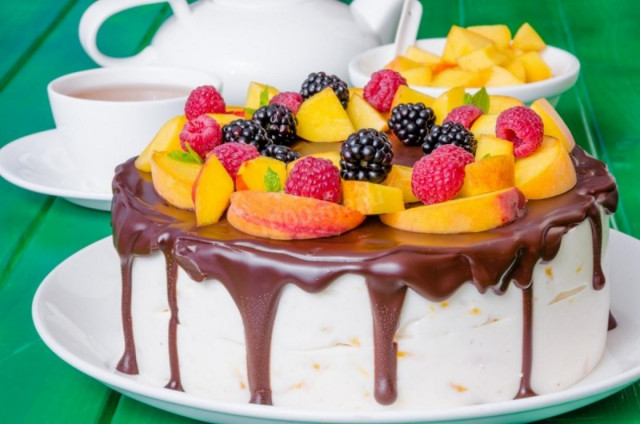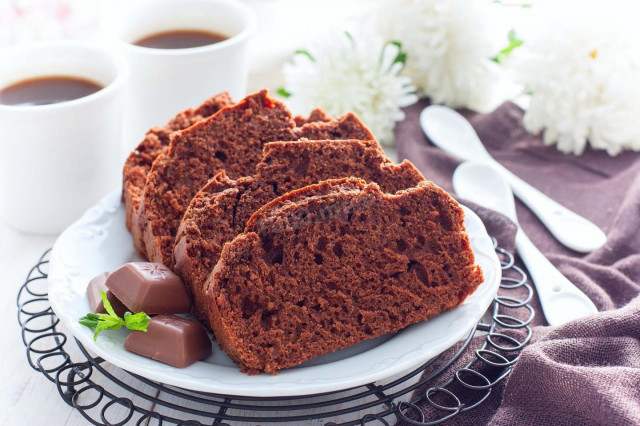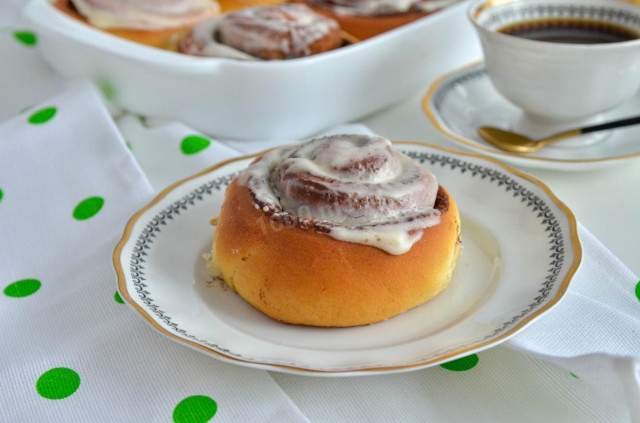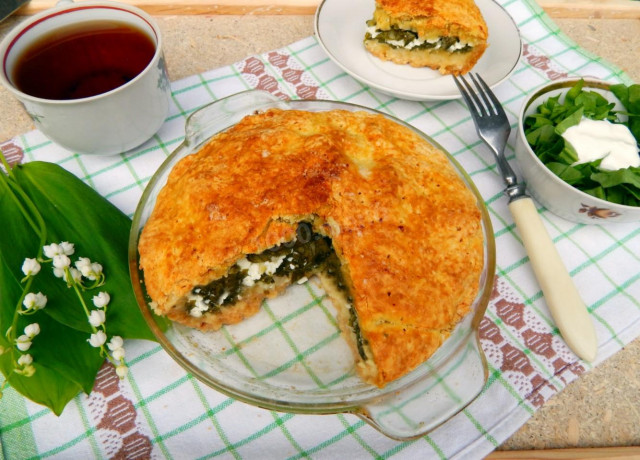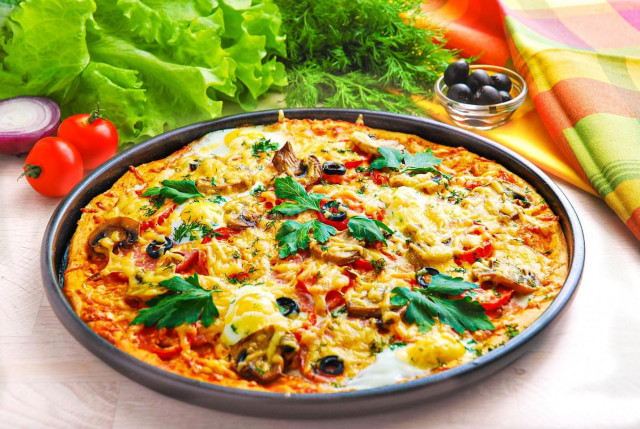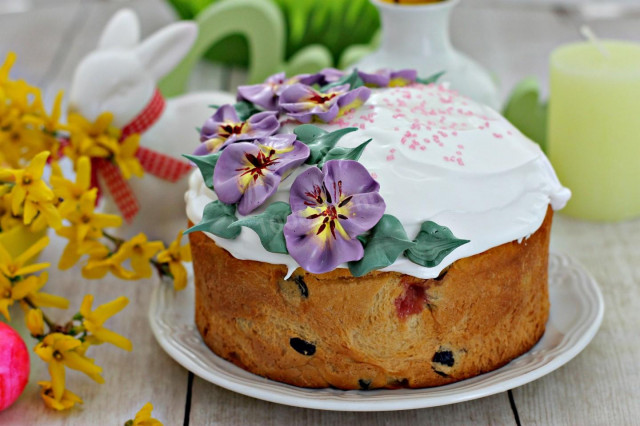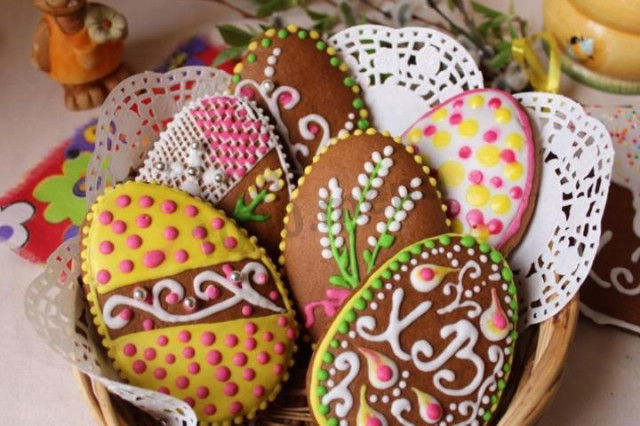Composition / ingredients
Step-by-step cooking
Step 1:
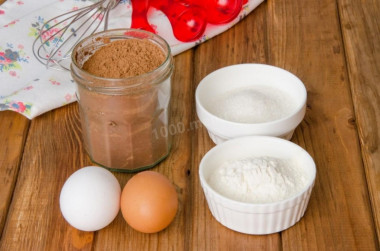
Let's make a chocolate sponge cake.
Step 2:
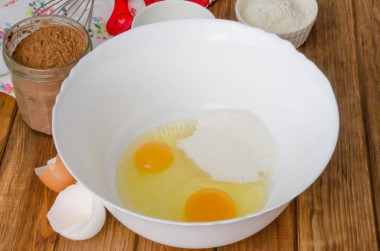
In a bowl, break the eggs and add sugar to them.
Step 3:
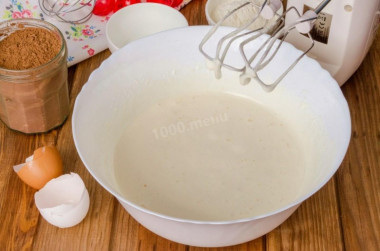
Beat them with a mixer for 5-7 minutes. We should get a lush and thick foam.
Step 4:
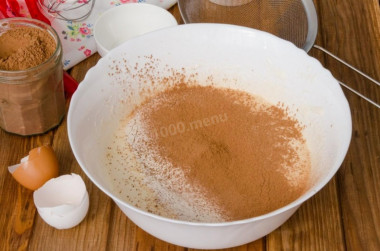
Combine the flour and cocoa powder in a sieve and sift together.
Step 5:
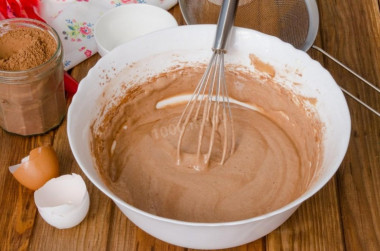
Gently with a spatula or whisk, mix the flour into the egg mass. We work gently so that the mass does not fall off.
Step 6:
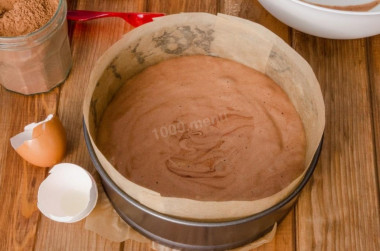
The form with a diameter of 18 cm is lined with paper (this should be done before starting the dough) and filled with dough.
Step 7:
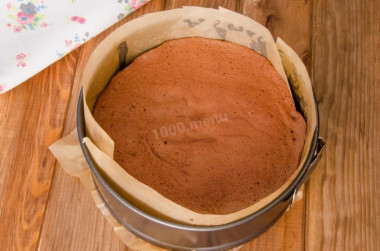
Bake our chocolate sponge cake for about 15-18 minutes at 180 C. We check the readiness with a wooden skewer.
Step 8:
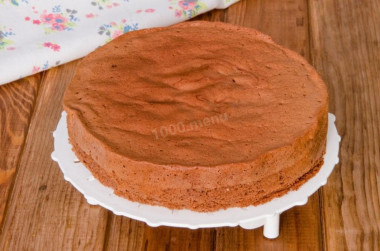
We take the freshly baked biscuit out of the mold and transfer it to the grill (I used a stand for steaming from a slow cooker), let it cool completely.
Step 9:
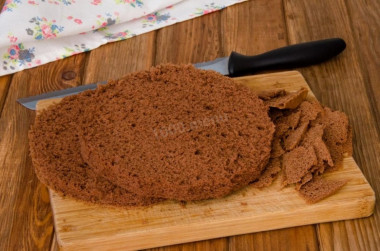
We cut the cooled biscuit slightly along the edge (it is not necessary to do this) to reduce it in diameter, and also cut it into 2 equal cakes.
Step 10:
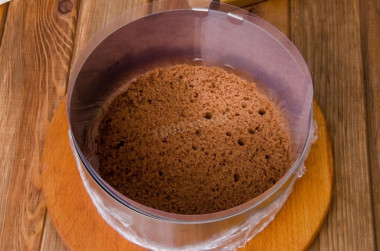
I collected the cake in a pastry ring, but if you don't have it, then just use the form in which the biscuit was baked. We put one half of the biscuit on the bottom of the mold and place it in the center (in case you also cut it off at the edges).
Step 11:
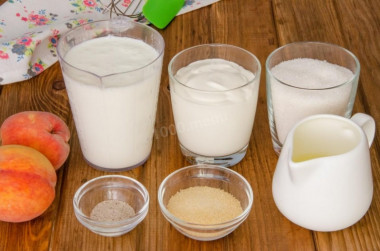
Now you can start making souffle.
Step 12:
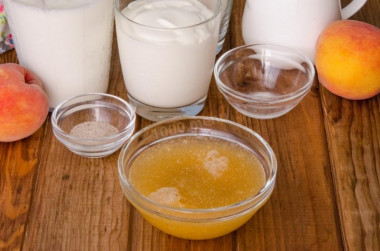
Fill the gelatin with syrup. I used canned pineapple syrup, because I had a jar open in my refrigerator, but if you don't have any fruit syrup, then you can safely take ordinary water (boiled, cooled) or milk or cream (10-15%) instead. We set aside the gelatin for 5-10 minutes to swell.
Step 13:
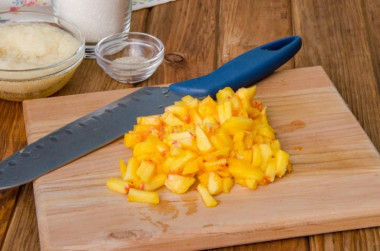
Meanwhile, peel (if desired) from the skin and cut into small pieces fresh peaches.
Step 14:
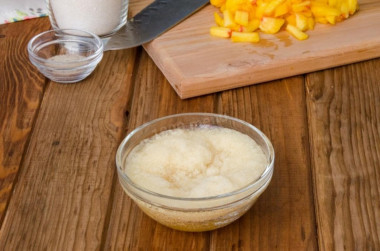
After 5 minutes we return to the gelatin.
Step 15:
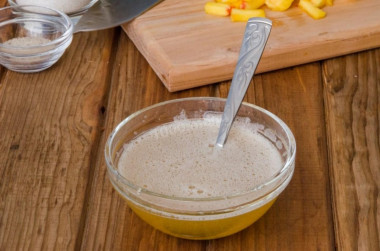
Gently warm it up on the stove or in the microwave until completely dissolved. We do not bring the solution to a boil!
Step 16:
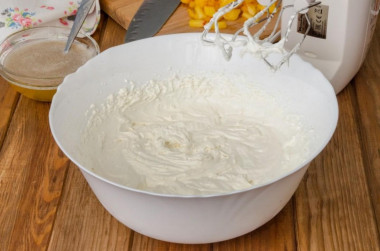
Whisk the heavy cream together in vanilla sugar and ordinary granulated sugar (we take fine sugar or replace it with powdered sugar). Whisk until you get a lush and thick cream.
Step 17:
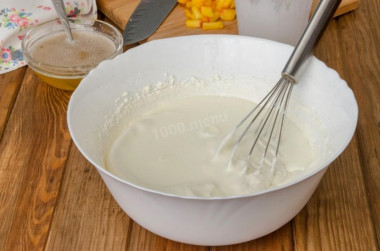
Pour yogurt into the cream and mix with a whisk until smooth.
Step 18:
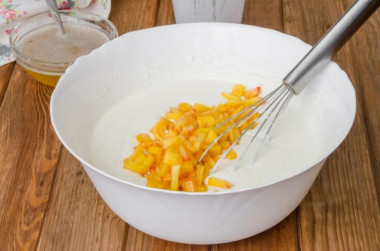
Mix sliced peaches into the creamy mass.
Step 19:
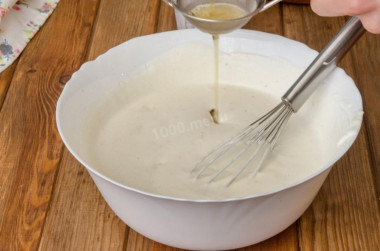
Filter the gelatin solution through a sieve and pour it into our souffle. With a whisk, mix everything very quickly and thoroughly.
Step 20:
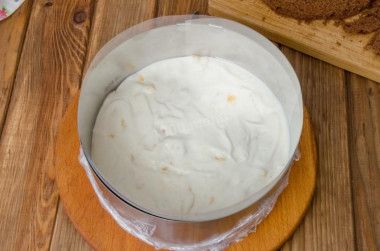
Putting together a cake. You need to do everything quickly, as the gelatin starts to work and the souffle freezes. On the laid out layer of sponge cake, we spread half of the souffle.
Step 21:
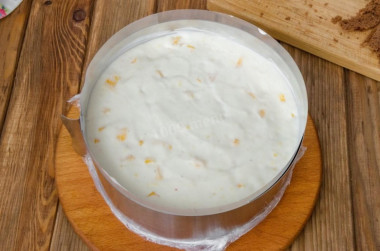
Next, lay out another layer of sponge cake and cover it with the rest of the souffle. The surface of the souffle, if necessary, is leveled with a spatula. We send our cake to the refrigerator for several hours until it completely solidifies.
Step 22:
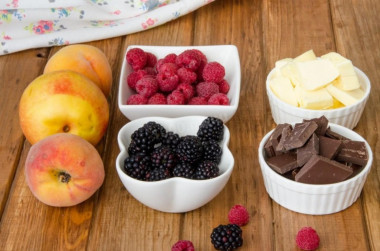
When the cake freezes, you can start making the glaze.
Step 23:
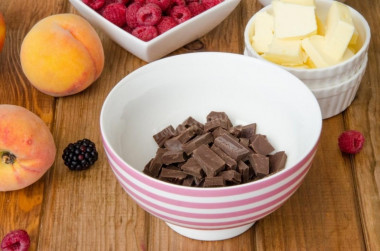
Dark chocolate (optionally, you can take milk) is broken into small pieces.
Step 24:
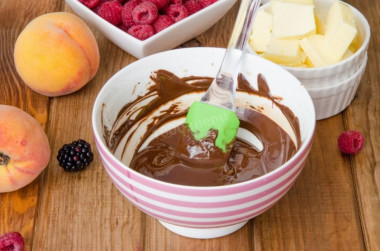
Melt it in the microwave or in a steam bath. Remember that chocolate cannot be overheated, otherwise it will curdle, so we constantly monitor its consistency and mix it as often as possible.
Step 25:
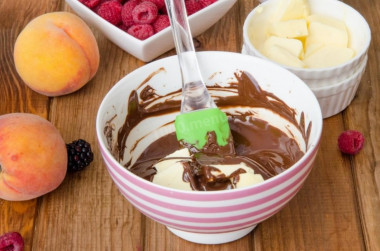
Add butter to the melted chocolate.
Step 26:
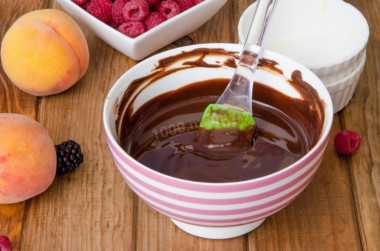
And mix until the butter melts and the glaze turns into a smooth and homogeneous mass. If suddenly the chocolate has cooled down a lot, and the butter has not melted yet, then we additionally warm up the mass in the microwave or on the stove. Let the finished glaze cool down a little.
Step 27:
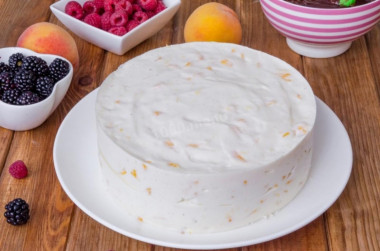
Transfer a well-frozen cake to a dish.
Step 28:
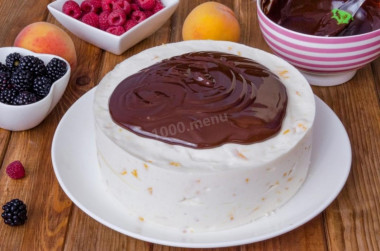
Pour the icing on top of the cake, not reaching the edge of the cake about 1-2 cm.
Step 29:
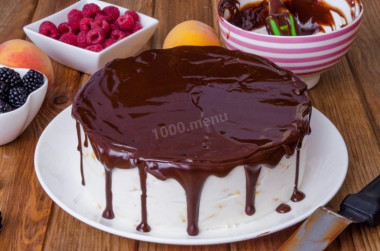
Now we form our smudges. To do this, gently push our glaze to the edges with a spatula or spatula. We try to work quickly, as the icing freezes quickly on a cold cake. In this form, we send our cake to the refrigerator until the moment of serving.
Step 30:
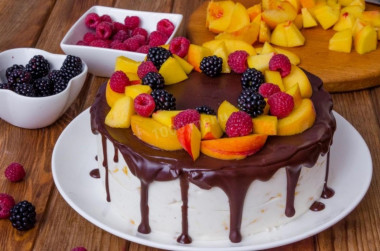
Just before serving, we decorate our cake with fruits and, optionally, berries. I used peaches, nectarine, raspberries and blackberries for decoration. Decorate according to your taste. I laid out fruits and berries along the edge, and left the center untouched.
Step 31:
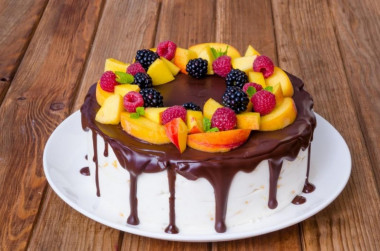
At the very end, add a few sprigs of mint and that's it! Our cake with chocolate streaks and fruit is ready to serve!
Step 32:
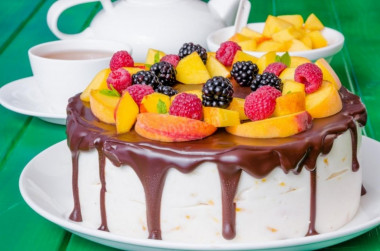
Bon appetit!
Step 33:
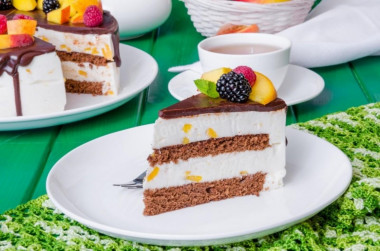
And here's the cut! Help yourself!
I think, depending on the season, fruits can be selected to taste. For example, in winter you can use all kinds of canned fruits or take kiwi, bananas, persimmons, but in summer, in addition to fruits, you can safely take all kinds of berries, thanks to which the cake will also be very bright in appearance.
Be prepared for the fact that flour may need more or less than indicated in the recipe. Focus not on the amount of flour, but on the desired consistency of the dough. To avoid mistakes, read about flour and its properties!
To make a dish using gelatin work, be sure to pre-soak the gelatin in cold boiled water. The colder the water, the better. Leaf gelatin can simply be put in a bowl of water. Before soaking the powdered gelatin, first rinse the dishes with cold water so that the crystals do not stick to the bottom. It is important to pour powdered gelatin with water, and not pour it into the water. Otherwise, lumps cannot be avoided. Then allow time for the gelatin to swell (the exact time is indicated on the package).
The swollen gelatin is heated to 70-80 degrees. It should never be brought to a boil!. At a temperature of 100 ° C, the mass becomes fibrous and viscous, collagen protein is destroyed and gelatin loses its jelly-forming properties.
Keep in mind that everyone's ovens are different. The temperature and cooking time may differ from those specified in the recipe. To make any baked dish successful, use useful information about the features of ovens !
Caloric content of the products possible in the composition of the dish
- Acedophilin 3.2 % fat content - 58 kcal/100g
- "rastishka " - 122 kcal/100g
- Danone drinking yogurt - 76 kcal/100g
- Drinking yogurt "agusha" - 87 kcal/100g
- "aktimel" natural - 83 kcal/100g
- Danone yogurt with 2.2% fat content - 96 kcal/100g
- "mazhetel" - 48 kcal/100g
- Ermann fat yogurt - 152 kcal/100g
- Yogurt with 3.5% fat content - 68 kcal/100g
- Natural yogurt with 1.5% fat content - 48 kcal/100g
- Low-fat milk yogurt - 38 kcal/100g
- Chicken egg - 157 kcal/100g
- Egg white - 45 kcal/100g
- Egg powder - 542 kcal/100g
- Egg yolk - 352 kcal/100g
- Ostrich egg - 118 kcal/100g
- Raspberry - 42 kcal/100g
- Fresh frozen sweet raspberries - 50 kcal/100g
- Whole durum wheat flour fortified - 333 kcal/100g
- Whole durum wheat flour universal - 364 kcal/100g
- Flour krupchatka - 348 kcal/100g
- Flour - 325 kcal/100g
- Granulated sugar - 398 kcal/100g
- Sugar - 398 kcal/100g
- Peaches - 46 kcal/100g
- Canned peaches - 68 kcal/100g
- Butter 82% - 734 kcal/100g
- Amateur unsalted butter - 709 kcal/100g
- Unsalted peasant butter - 661 kcal/100g
- Peasant salted butter - 652 kcal/100g
- Melted butter - 869 kcal/100g
- Blackberry - 31 kcal/100g
- Cocoa powder - 374 kcal/100g
- Gelatin - 355 kcal/100g
- Cream 35% - 337 kcal/100g
- Cream 40% - 362 kcal/100g
- Chocolate 70 % - 539 kcal/100g
- Dark chocolate - 539 kcal/100g
- Vanilla sugar - 379 kcal/100g
- Syrup - 300 kcal/100g
- Nectarine - 48 kcal/100g

